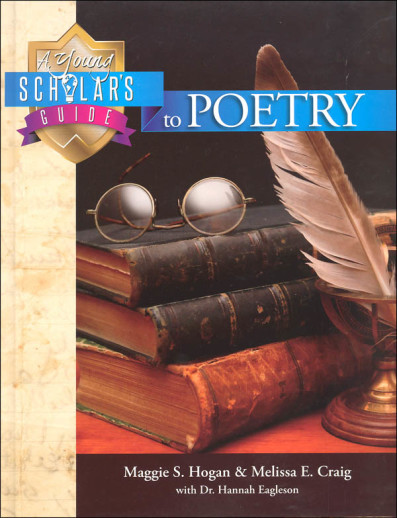We use cookies to make your experience better. To comply with the new e-Privacy directive, we need to ask for your consent to set the cookies. Learn more.
Young Scholar's Guide to Poetry Book (with Digital Download Code)
Why take time to "Piece Together the Poetry Puzzle"?
- Because the Bible is full of poetry and imagery, learning about poetry helps us understand God's Word.
- Working with poetry helps us better understand the English language.
- Writing Poetry offers a unique way to express our thoughts and feelings.
- Exploring poetry joins us with our past in the "ah-ha" moment when we recognize a truth that someone else has put to words.
This course provides a close-up look at poets through the ages and provides the opportunity to interact with their work. By exploring a range of poetic techniques & devices, students will be able to both read and create poetry with understanding and meaning.
This book includes:
- 32 Weekly Lessons covering biographies of famous poets and explantions of key poetic devices
- Easy-to-Use Timeline
- Easy-to-Use Maps
- Poet Info-Cards & Game Directions
- Poetic Device Cards
- Poetry Puzzle Cards
- Student Reviews
- Answer Keys
- Coloring Pages
- Directions for Hosting a Poetry Slam
- Poetry Reading andResource List
Through a broad selection of ancient, classical, Biblical and modern poetry, this guide introduces this symbolic world as appealing, accessible and understandable to anyone. Each poetic device is taught by highlighting a unique poem and its poet. Activities like timelines, puzzles, games, and poetry journals reinforce learning. At each unit's end, students review all previous concepts and then practice the devices learned. Unit 1 teaches structure and rhyme scheme (including various rhymed lines, shaped, villanelle, free verse, and sonnets). Unit 2 covers epic, ode, ballad, pastoral devotional, narrative, and 3 types of humorous poems. Unit 3 teaches anaphora, refrain, rhyme, consonance, alliteration, onomatopoeia, symbolism, personification, apostrophe, metaphor and simile. The free digital Companion Guide on the publisher's website includes reproducible student reviews, coloring pages, game templates and a lesson text work space (rather than writing in the text), and the text answer key. 8 ½"x 11 ¼". 255 pgs, hc.
| Product Format: | Paperback |
|---|---|
| Brand: | Bright Ideas |
| Author: | Melissa E. Craig and Maggie S. |
| Grades: | 4-8 |
| ISBN: | 9781892427489 |
| Length in Inches: | 11.3125 |
| Width in Inches: | 8.75 |
| Height in Inches: | 0.8125 |
| Weight in Pounds: | 2.6 |

